Brazilian manhunt continues for two murderers who escaped maximum-security prison and built an underground bunker to hide from drones that detect human heat
Two fugitive killers built an underground bunker to hide from police drones that detect human heat after fleeing a maximum security prison in the Brazilian state of Rio Grande do Norte.
Convicted murderers Rogério da Silva and Deibson Cabral set up their hideout near the home of a couple they took hostage on February 14 after escaping from the federal prison of Mossoró in the municipality of Baraúnas, Brazilian news magazine Fantastico revealed .
Cabral and da Silva were housed in adjacent prison cells at the Mossoró federal prison, where they served 81 and 74 years respectively for murder.
On February 17, the convicts broke into a rural home 13 miles from the prison and paid the couple about $1,000 to let them sleep in hammocks.
There they dug a hole and used a tarp to protect them from heat-seeking drones.
Deibson Cabral (left) and Rogério da Silva (right) escaped from the federal prison of Mossoró in the northeastern municipality of Baraúnas on February 14. They are the first prisoners ever to escape from one of Brazil’s five prisons that are part of the country’s federal penitentiary. system
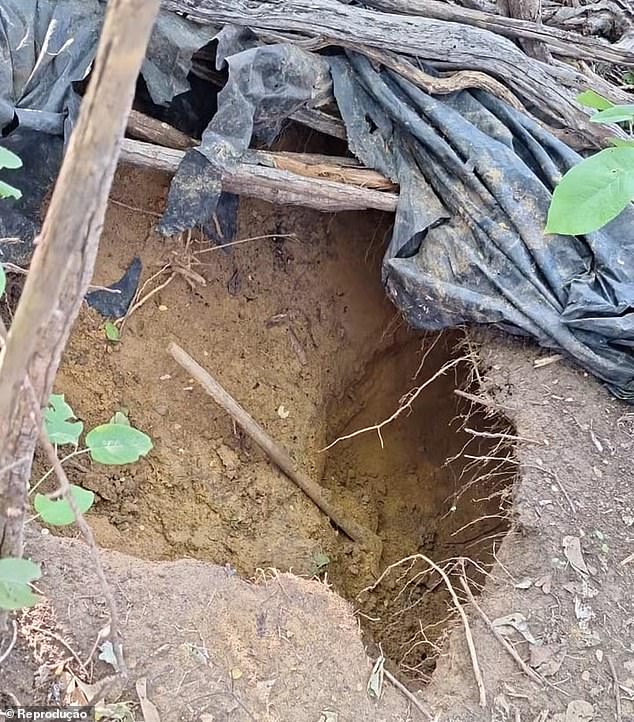
Deibson Cabral (left) and Rogério da Silva managed to build an underground bunker and cover it with tree branches and a tarp so that police drones could not detect it
“They asked us to remain calm and that nothing would happen if we did what they asked,” the hostage homeowner said.
The man told police that he and his wife complied because da Silva and Cabral had revealed information about their family and that it appeared they knew to go to their home.
“They kept saying that people were watching us, but nothing would happen if we helped,” he said.
The man added that he was forced to buy food for them and left it under a tree on his property.
To hide from the police, Da Silva and Cabral dug a hole in the woods near the couple’s home and covered it with branches and a tarp.
Da Silva and Cabral fled the property on Friday, shortly after the man was stopped by police at a checkpoint and revealed that he had been forced to shelter by them.
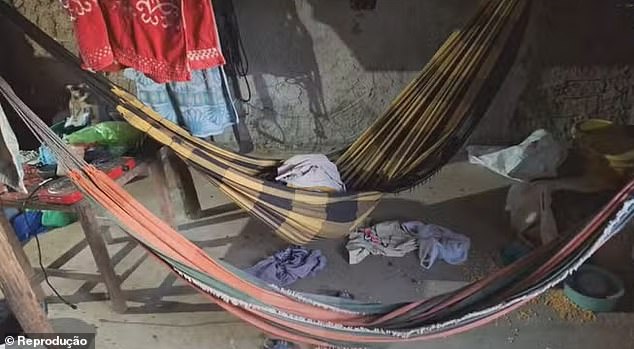
A homeowner revealed that the fugitive suspects broke into his home on February 17 and forced him and his wife to shelter them.
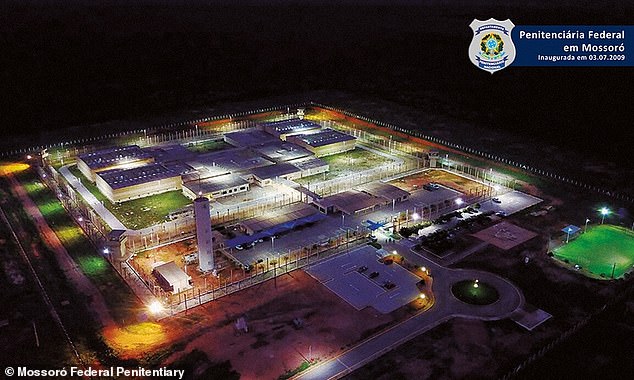
No inmate had ever escaped Brazil’s federal prison system until Rogério da Silva and Deibson Cabral, who were housed in adjacent cells, fled Mossoró’s federal prison on February 14.
Chief Inspector Péricles Santos of the Federal Highway Police said the fugitives have also fed themselves thanks to the fruits produced in the region, but sniffer dogs have not been able to trace their whereabouts in the forest because the rain has covered their tracks on the ground.
Authorities divided 500 officers into day and night units in the hope of catching the suspects, who could be hiding in one of 207 caves spread over 32 square kilometers.
No inmate had ever escaped Brazil’s federal prison system until February 14, when da Silva and Cabral, who were housed in adjacent cells, fled Mossoró’s federal prison.
They were able to make holes in the top part of their cells
“We want to know how these citizens dug a hole and no one saw it,” Brazilian President Luis Inacio Lula da Silva said last week.
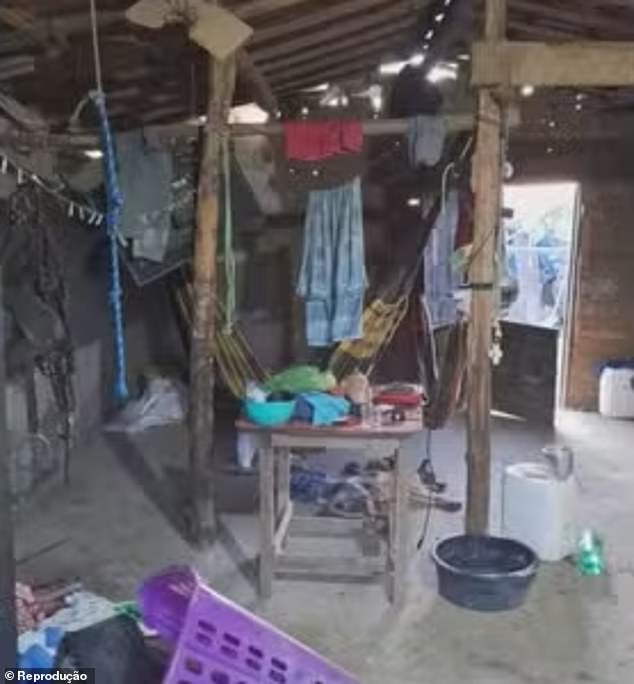
The Brazilian fugitives paid a couple about $1,000 to stay in their home and stayed there for seven days before fleeing Friday
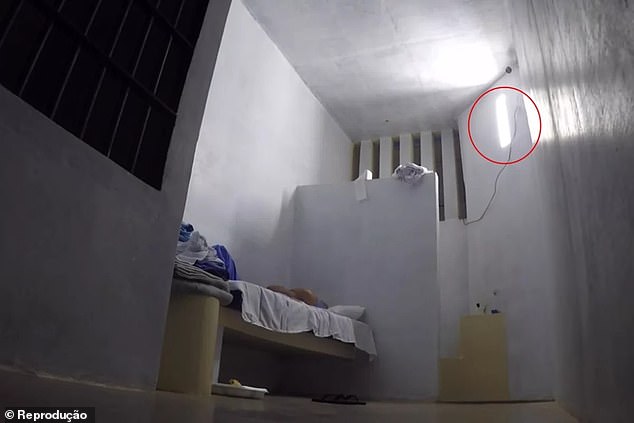
The fugitives were able to escape from the prison through a hole they dug in one of the walls of their adjacent prison cells.
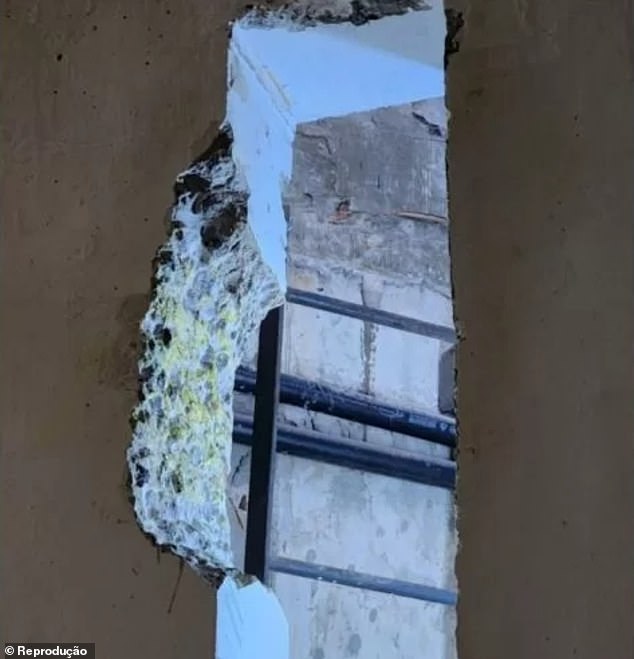
Brazilian President Luis Inacio Lula da Silva was furious when he learned that two prisoners had escaped from the federal prison of Mossoró by demolishing part of the wall of their prison cell. “We want to know how these citizens dug a hole and no one saw it,” he said
Both were members of a Rio de Janeiro-based faction of the Comando Vermelho.
Cabral and da Silva had been transferred to Mossoró federal prison in September 2023 after being involved in an uprising at Rio Branco’s Antônio Amaro Alves prison that left five people dead.
They failed to escape from Antônio Amaro Alves prison together in 2013 after sawing off the iron bars of their prison cells and using them to build a ladder to reach the ceiling before being captured by guards, Globo News reported.
Before Cabral and da Silva, no inmate had ever escaped from the federal penitentiary system, which oversees five maximum-security prisons.
According to the National Secretariat of the Criminal Police, prison guards prevented two escapes in 2023: one in the federal prison of Mossoró and one in the federal prison of Catanduvas.
